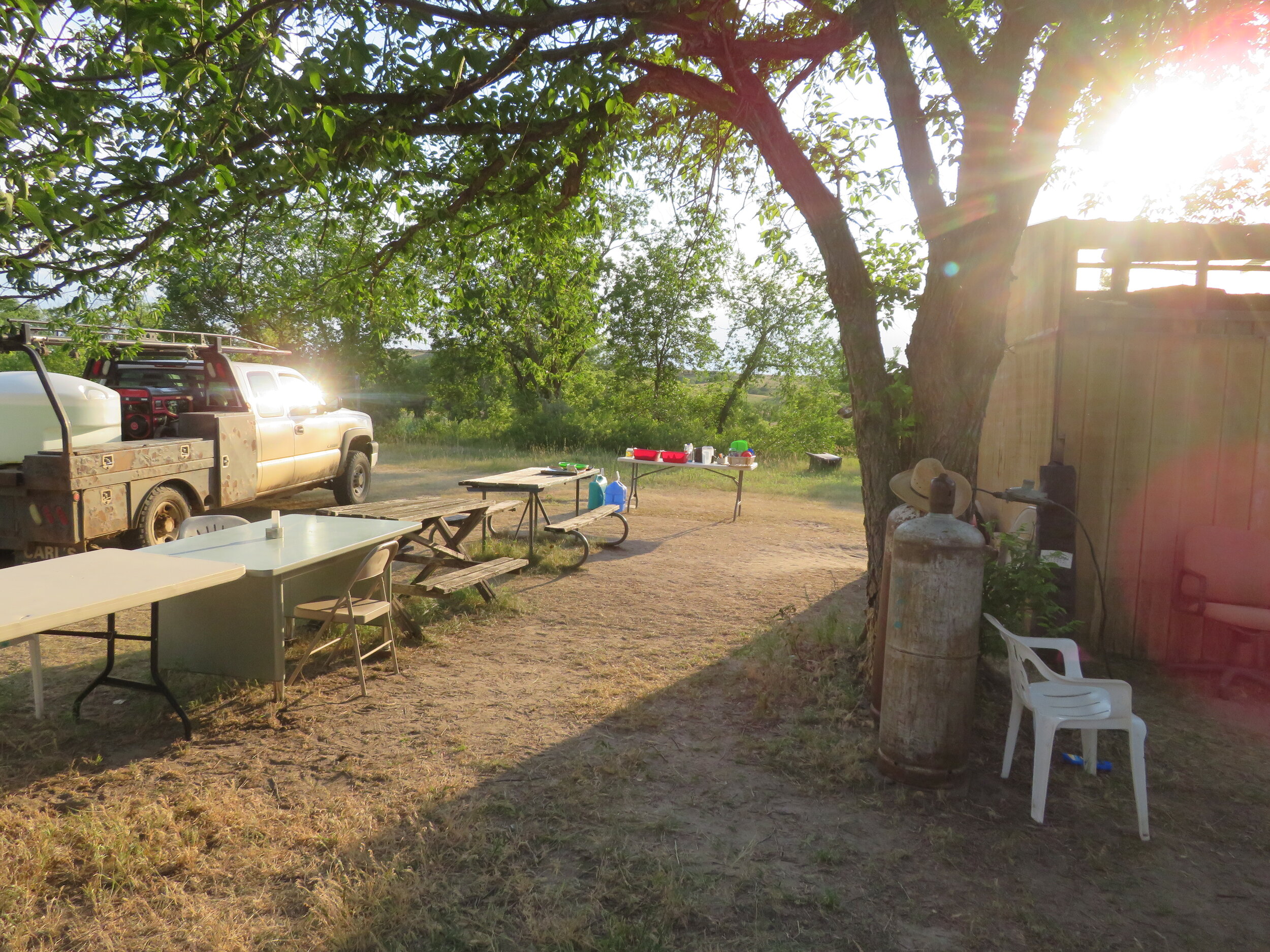Vision Quest Ceremony – Part 1
/David is still working on his video edit, so I’ll regale you with more of my Vision Quest observations.
I provide this caveat once more about our vision quest observations. We were not and don't claim to be particularly knowledgeable about the Lakota culture or ways. I have done significant on-line research to learn more. We respect the Lakota beliefs and only report our observations and what we learned during our personal experiences. Note that photos of the actual ceremony are not allowed, so I'm hoping my words alone will paint an adequate picture for you. What few photos I do have, were taken with permission.
Though most campers live in tents, one of the singers lives in a traditional tipi.
First, a word about the camp. Most everyone tent camps. There were three Lakota ceremonial singers who live here semi-permanently and have pitched tents and there's also one RV. One of the singers lives in a traditional tipi. Camp is rustic and basic. There are two outhouses, hand-dug by previous visitors. There is no running water and what water we had for communal use was used sparingly from a ~500 gallon plastic tank which sat on the bed of a nearby pick-up truck.
A small hut housed a communal kitchen area. At the back of the kitchen area sat a huge old iron cookstove with four propane gas burners and a flattop grill. There was an oven, but no one was courageous enough to try it out. A small fridge was crammed full of sundry refrigerated 'stuff' and another fridge with a small freezer was crammed even fuller outside the hut and hummed constantly. Everyone contributed to the larder. Pots and pans were stacked up on shelves above the stove and cooking tools were hung haphazardly from the hooks on the wall, all waiting to be used. Rudimentary wooden shelves were replete and sometimes overcrowded with various spices, canned goods and dry goods. A small prep table sat under the shelves and whenever more than 2-3 people crowded into the kitchen, there was little room to maneuver.
Camp is basic and rustic, but adequate. The communal kitchen area, pictured above, was a meeting place.
Long picnic and folding tables were placed end to end outside of the kitchen area under a sprawling cottonwood tree. A variety of plastic and metal folding chairs provided seating for all those who gathered for meals. People took turns preparing meals each day throughout the week, but the evening meal was the key time for gathering and we joined the others each evening. It was a social time and quite pleasant.
People came and went from the camp constantly. Some were vision questers and some came to support others in their quests. All were friendly, welcoming and helpful in sharing insights into their experiences as well as explanations of tribal ceremonies and ways.
Brad and Catrina had been told that they would begin their vision quest the following day. We were anxious to learn as much as we could about the ceremony and the procedures in advance. That evening, we were asked if we wished to participate or witness our first sweat lodge ceremony. A sacred fire had been lit earlier in the day and rocks ranging in size from oranges to cantaloupes were nestled amongst the coals. We opted to watch from the sidelines as the holy man, Harold, instructed each person in turn to enter the lodge. Each bowed their head to the earth as they entered on their knees and spoke a phrase which we neither heard clearly nor understood. We would learn the phrase later. When all had entered, one man remained outside the lodge and, using a pitchfork, methodically carried all the hot, glowing rocks from the sacred fire and placed them inside the lodge. The rock carrier finally crawled inside himself and closed the entry flap behind him, carefully tucking in all edges tightly.
We moved closer to the lodge, sat quietly and listened. Harold spoke for a brief time, but we could not hear his words. Singing ensued, a few more words from Harold and about 15 minutes later, the flap finally opened and people began emerging. One woman was going on her quest that evening and she remained in the lodge. She would be escorted to her quest site by the group and we were allowed to tag along to observe the proceedings. Other members of the group provided guidance and we paid careful attention to protocol.
Haŋblečeyapi (hahn blay-chay-yah-pee) translates literally from the Lakota to 'crying for a vision' and it was typically performed as a rite of passage by boys of the tribe. The ceremony was performed in many different ways depending on the tribe, but its goal was always to connect with a guardian spirit primarily through isolation, meditation and introspection, sensory deprivation and fasting. Native American Indian beliefs are strongly rooted in animism, which is based upon the premise that all of creation has a soul or spirit – including animals and plants. The purpose of a vision quest is for the seeker to receive guidance from the spirit world, helping them to find direction and make important spiritual and life choices.
Tomorrow we would repeat and participate in these ceremonial procedures as Brad and Catrina began their vision quests. There are different ways to experience a vision quest. Catrina would go 'up on the hill' and Brad would go 'into the pit'. We were anxious and nervous for them, but they were prepared and excited. “Exactly what time tomorrow... morning, afternoon, evening?”, we asked. “When it's time” was the answer.



